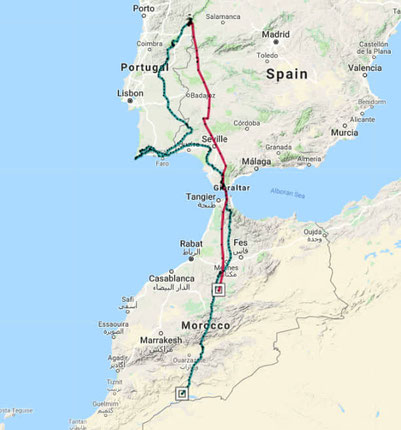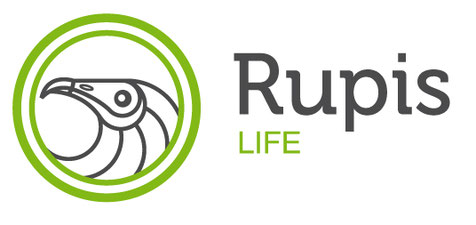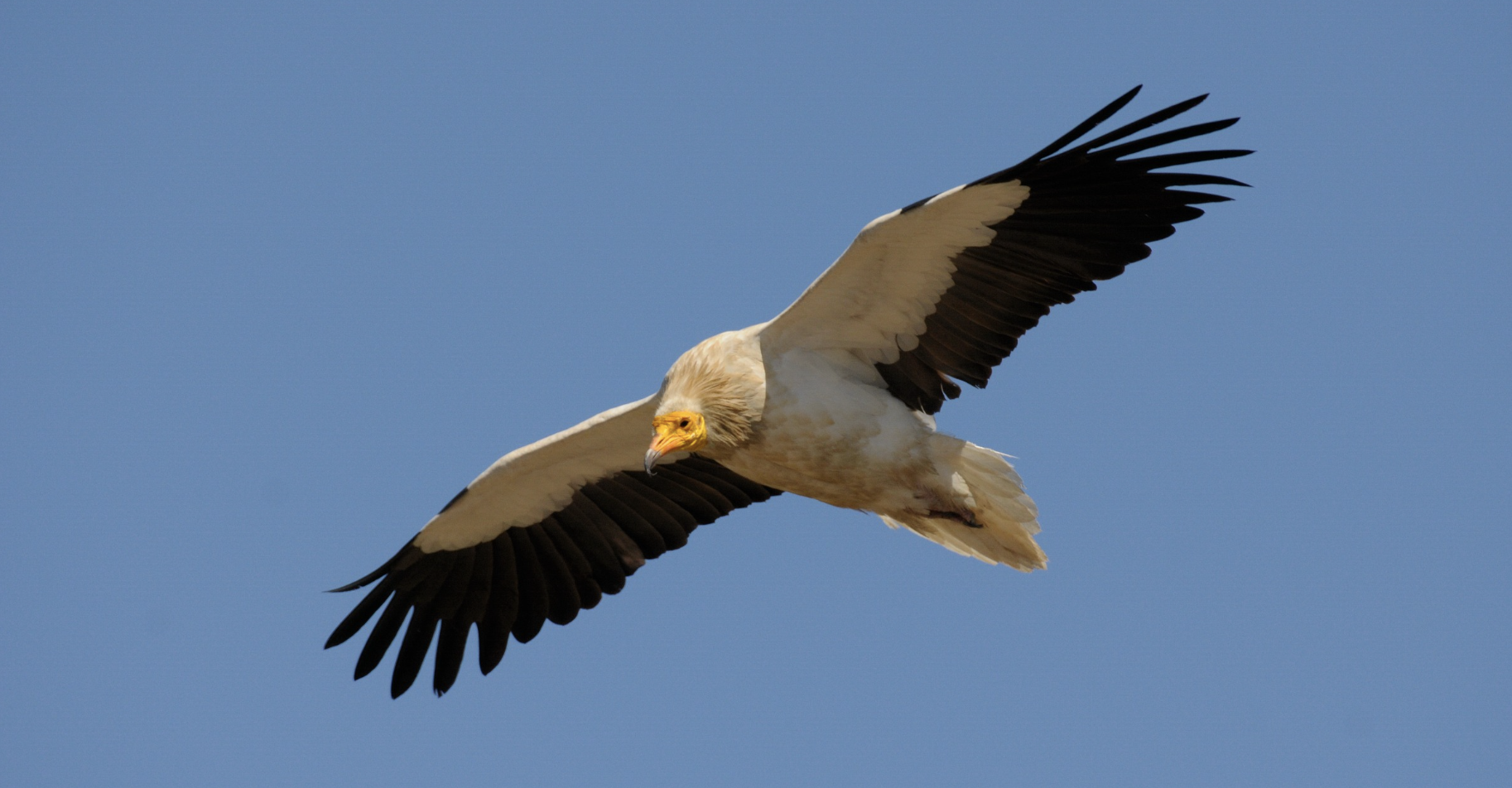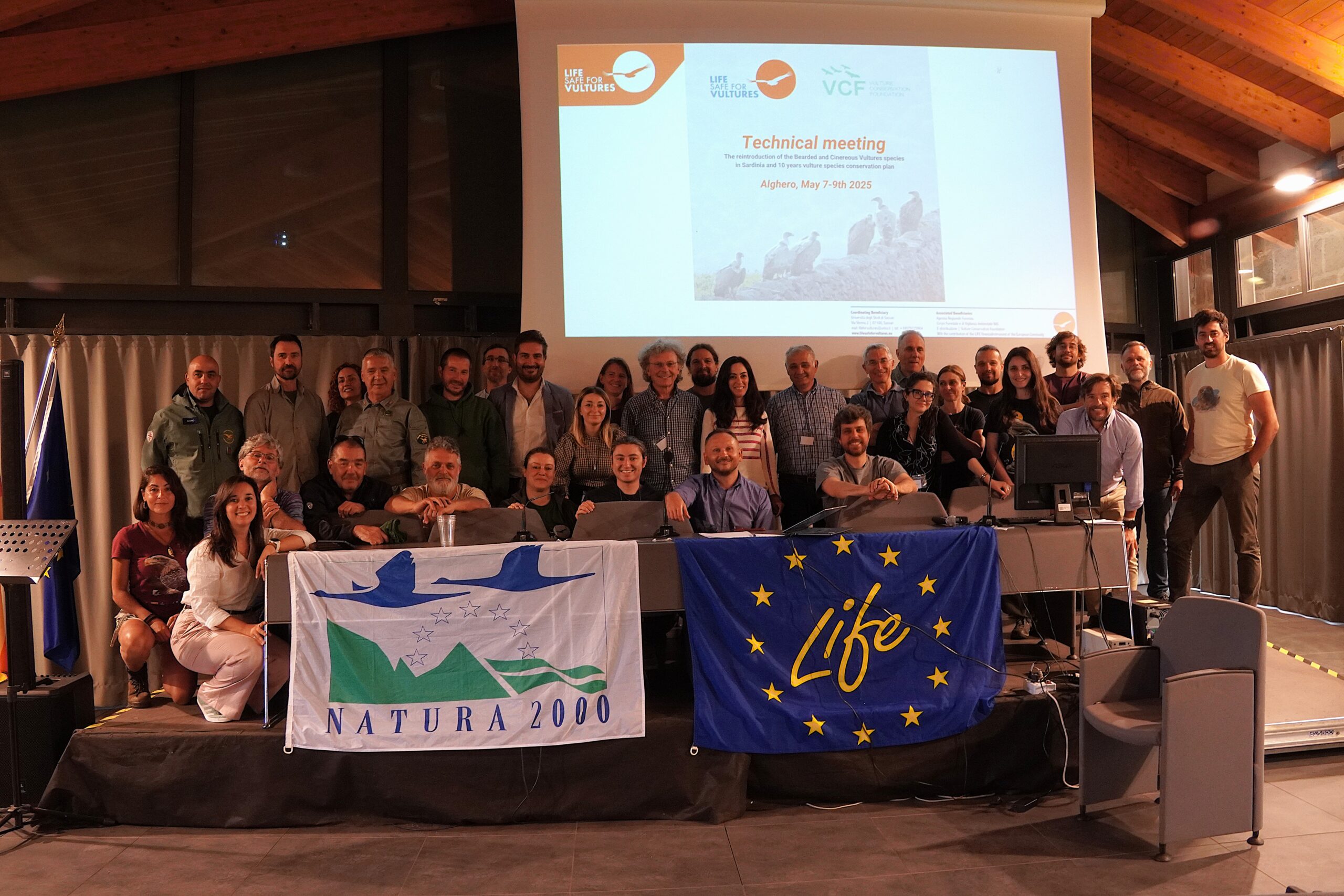
It’s that time of the year again when Egyptian Vultures start their journey south towards Africa. Every year, they make a round trip of around 7,000km from their breeding areas in Europe to their winter grounds in sub-Saharan Africa. So far, two of the GPS tagged LIFE Rupis vultures have begun their migration journey – Britango and Faia.
Britango
Britango left the territory in the Douro canyon where it fledged and started moving south on 27 August. Britango first flew to the west, having a look at Sagres but luckily got back on track, found Gibraltar and we were so happy to see that the vulture crossed the Strait of Gibraltar and reached Morocco successfully. The crossing of the strait took it only 26 minutes! Before crossing, it used a thermal wind to gain altitude and reached a height 2329 meters above sea level. This allowed it to then sail across the strait and reaching Morocco at an altitude of 1107 meters above sea level.
Watch the 3D animation of the crossing
It is now making its way south, passing through Algeria and Mauritania, over the Sahara desert. The phone reception is working only in certain areas and hence we receive GPS locations irregularly. Will it make it? And spend the winter in the same areas as the other birds from the Douro canyon? We’ll have to wait and see.
Faia

Faia is a female Egyptian Vulture that was captured at the Escalhão supplementary feeding site in June 2017, and bred successfully in the Águeda valley, on the Spanish side of the international river.
Faia had left the Douro canyon on 6 September. She flew over the Strait of Gibraltar to Morocco on 9 September , and is making good progress heading south.

In 2017, she gave us quite a scare when we lost track of her when she left Morocco and was entering Algeria, probably flying into an area with no GSM coverage in the desert – and we were without notice from her for over two months. Thankfully, she re-surfaced in Mali just south of the Mauritanian border. GSM coverage is fragmented in the desert and the experience that we have with the birds tagged in RUPIS is that we often are without notice for some days or a few weeks.
LIFE Rupis

The LIFE Rupis conservation project, led by Portuguese wildlife organisation Sociedade Portuguesa para o Estudo das Aves (SPEA), and funded by the European Union’s LIFE Fund and the MAVA Foundation, is working in the cross-border Douro region of Spain and Portugal to protect and strengthen the populations of Egyptian vultures and Bonelli´s eagle. With around 135 breeding pairs, the region has one of the largest population of Egyptian vultures in Europe. Creating a network of feeding stations, improving habitat and nesting sites as well as tackling the major threats of electrocution from electricity pylons and illegal wildlife poisoning, the LIFE Rupis project will strengthen the population and improve breeding rates



